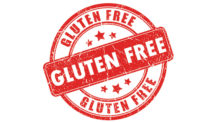Gluten-free is a hot product category. It seems everyone in the food industry wants to be involved in this trend, and the gluten-free label claim does attract a segment of the population that is highly sensitive to the ingestion of traces of gluten. Consumers with celiac disease must completely avoid gluten.
Accordingly, the use of gluten-free claims is tightly regulated. FDA has defined gluten-free as less than 20 parts per million (ppm) gluten. That is 0.002 percent. For manufacturers, producing foods that consistently contain less than 20 ppm gluten can be challenging. In every case, they must document that a product actually has less than 20 ppm gluten. In addition, every ingredient used in the formulation of gluten-free products should be documented to have less than 20 ppm gluten. The confirmation of gluten-free status requires manufacturers to use sensitive, highly specific gluten-detection methods.
Fortunately, several excellent gluten test methods are commercially available.
Gluten test methods
Gluten-specific immunoassays, also known as ELISAs, are the preferred method for testing products for gluten. Gluten ELISAs are highly specific, with virtually no risk of false positive responses. These methods are also highly sensitive, with lower qualification limits of 5 ppm gluten. Some manufacturers of commercial gluten ELISA kits indicate that their kits have a detection limit of 3 ppm gluten. However, the lowest standard provided with these kits is 5 ppm, so that is the lowest concentration that can be reliably detected.
FDA recommends the use of two specific, quantitative gluten ELISA methods for detecting gluten residues in foods and ingredients. The so-called R5 gluten ELISAs are sold in the U.S. by R-Biopharm AG, Darmstadt, Germany, and Neogen Corp., Lansing, MI. Perhaps the most widely accepted methods for gluten detection worldwide, the tests are based on a highly specific monoclonal antibody called R5. The other method is the gluten ELISA from Morinaga Institute of Biological Science, Inc., Yokohama, Japan. Also available in the U.S., this kit is based on a specific polyclonal antibody raised against wheat gluten. Since these two ELISAs are recommended and used by FDA, they would be suitable choices for any company wishing to validate the gluten-free status of its products.
There is, however, another gluten ELISA method based on the G12 monoclonal antibody. Sold in the U.S. by Romer Labs Inc., Union, MO, it is also highly specific and similarly sensitive.

When to test for gluten
The gluten ELISAs are capable of detecting the gluten protein fractions of wheat, barley, rye and related grains (durum, spelt, triticale, einkorn, etc.). This broad spectrum of reactivity to all gluten sources is advantageous, because all these gluten sources are problematic for gluten-sensitive consumers.
The gluten ELISAs don’t react to proteins from gluten-free grain sources, such as oats, rice, buckwheat and amaranth. But if those gluten-free grain sources are contaminated with a gluten-containing grain, then a positive analytical result can be obtained.
Cross-contamination can occur from agricultural comingling―shared farm fields, harvesting equipment, transportation vehicles, on-farm and off-farm storage sites, and so on. Thus it’s not always easy for manufacturers to access a consistent supply of gluten-free grain ingredients.
If a manufacturer is producing gluten-free products, then it is prudent for the company to test all ingredients in the formulation for gluten residues on a periodic basis. More-frequent testing is recommended when the ingredients originate from sources that have a higher probability of gluten contamination, such as gluten-free grains that might be subject to agricultural comingling or ingredients sourced from suppliers that also process gluten-containing ingredients.
The testing frequency of ingredients for gluten residues is not fixed, but should be sufficiently often to establish a good database of analytical results to support the gluten-free label claim. Because a gluten-free claim is made on a product, analysis of the finished product for gluten is also recommended, and representative samples should be taken from each lot manufactured.
With analytical testing for gluten, manufacturers should give special consideration to particulate contamination with gluten. With gluten-containing grains or other particulates derived from such grains (flakes, rolled grains, etc.), the gluten residues may not be uniformly distributed in the product of concern. In such cases, the ability to detect any residual gluten depends on the sampling strategy. While no recommendations exist for sampling, taking multiple samples offers more-convincing results.
Excellent analytical tools are available for gluten detection that allow manufacturers to validate their gluten-free label claims. Because of the widespread use of wheat and barley in today’s food supply, analytical validation of both ingredients and products is necessary to support this claim.






